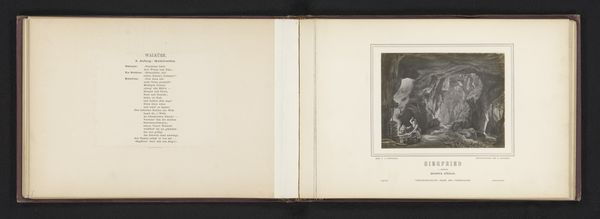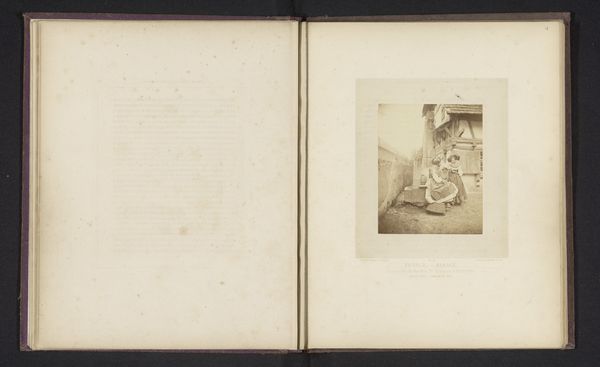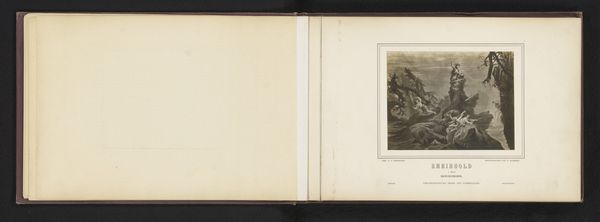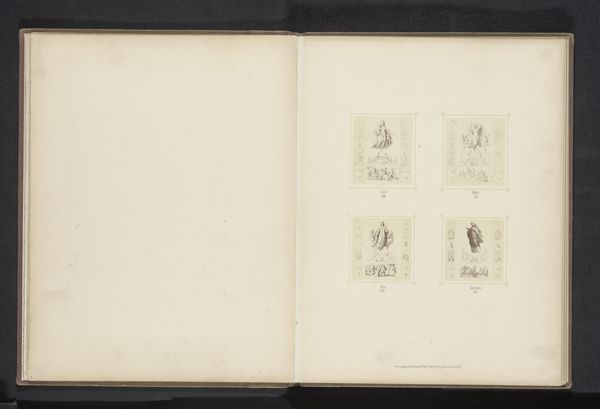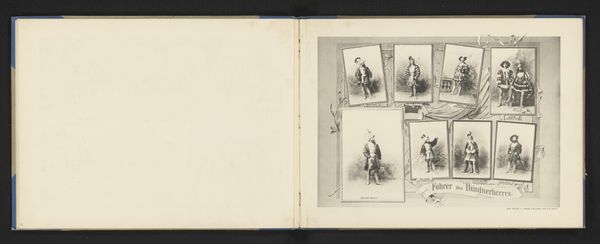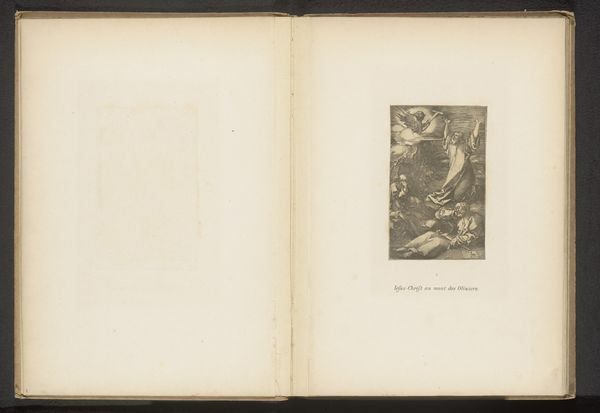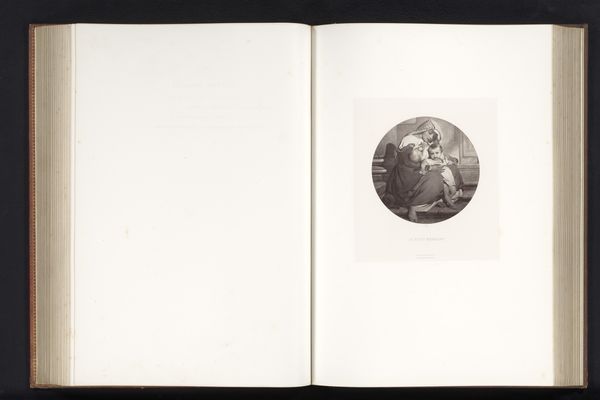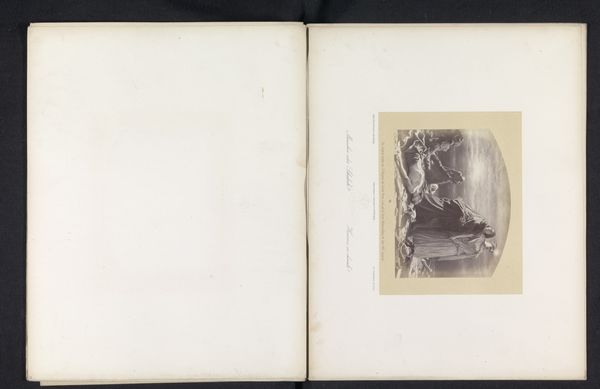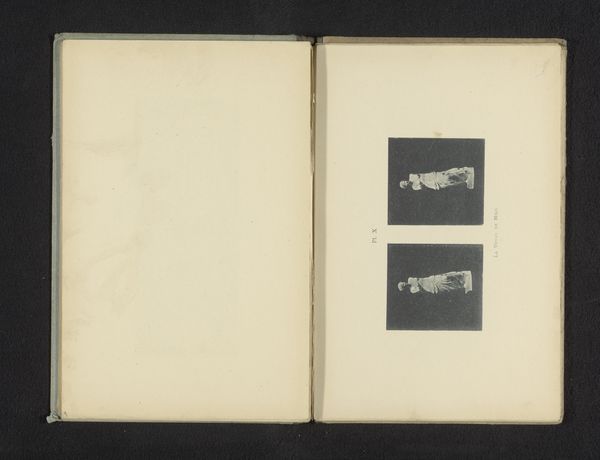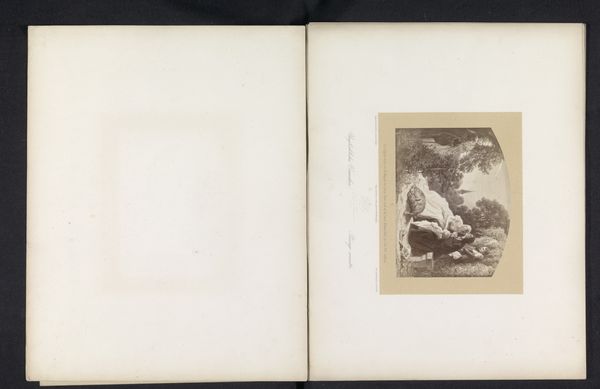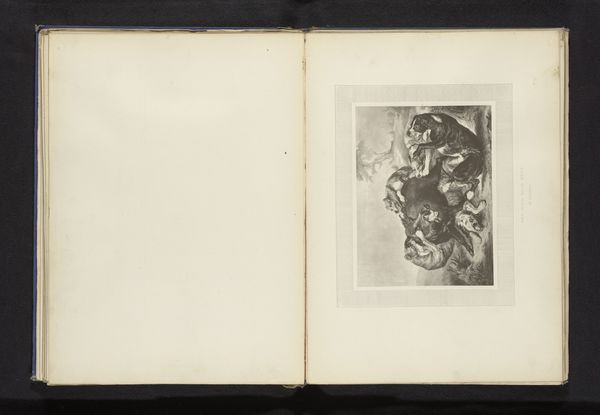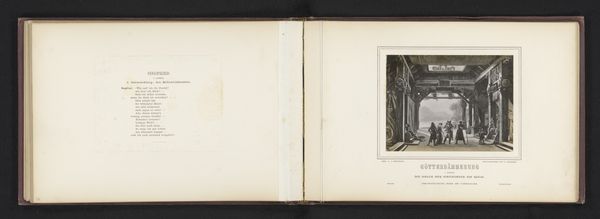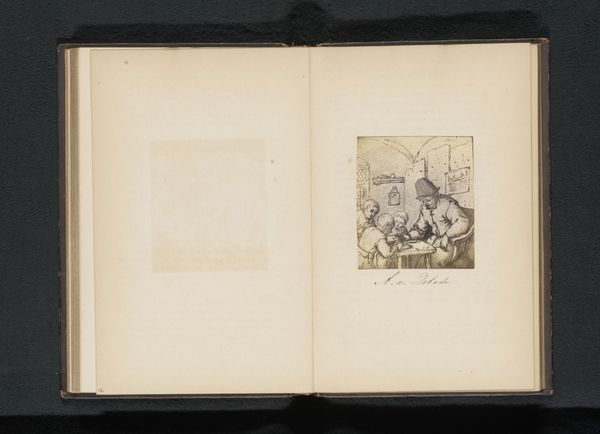
Fotoreproducties van vier tekeningen van vrouwelijke personificaties van de kunsten voor wandschilderingen voor het trappenhuis van het Neues Museum in Berlijn before 1870
0:00
0:00
drawing, paper, ink
#
portrait
#
drawing
#
neoclassicism
#
figuration
#
paper
#
ink
#
history-painting
#
academic-art
#
watercolor
Dimensions: height 325 mm, width 250 mm
Copyright: Rijks Museum: Open Domain
Curator: This page displays photogravures of four preparatory drawings by Gustav Schauer. They depict female personifications of the arts and were intended for murals within the Neues Museum in Berlin, dating from before 1870. Editor: My initial impression is one of idealized forms. The flowing robes and delicate line work certainly evoke the grace and poise of classical figures. Curator: Indeed, we see a distinct Neoclassical influence. Consider how these allegorical figures – Sculpture, Poetry, Architecture, and Painting– embody specific artistic ideals. It’s no accident they recall antique statuary; they reflect the era’s interest in connecting the present with a glorious, often romanticized, past. These representations serve as a symbolic foundation for the museum’s very identity and aspiration. Editor: Absolutely. These aren't just decorative figures; they are symbolic embodiments of the values the museum seeks to uphold. I notice each is accompanied by putti and iconographic symbols; the sculpted bust signifying sculpture, the book and laurel wreath for poetry… It’s almost like a visual key to unlocking the artistic purpose of the space. How were these drawings originally received? Curator: The Neues Museum suffered significant damage during World War II, including these murals, which were eventually lost. These photographs serve as important historical documents for academic art of the era, illuminating how state-funded projects, like the rebuilding of museums, become theaters for the reconstruction of a nation’s cultural image. Editor: That’s a poignant perspective. Even these remnants on paper provide insight into an artistic vision rooted in idealization. They underscore the cultural memory associated with classical forms. Curator: Exactly. By studying their reception, we gain a better grasp on art's societal function and its role in the continuous construction, destruction, and re-construction of cultural value. Editor: Ultimately, images, even in fragmented form like this, can transcend temporal limitations to engage with viewers over the decades. Curator: Indeed, Gustav Schauer's drawings of female figures of art illustrate not just a moment in art history but also the lasting power of allegorical figures within cultural consciousness.
Comments
No comments
Be the first to comment and join the conversation on the ultimate creative platform.
